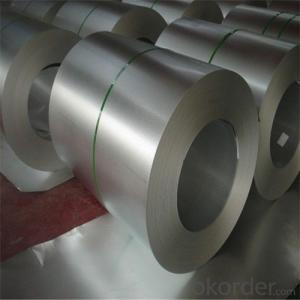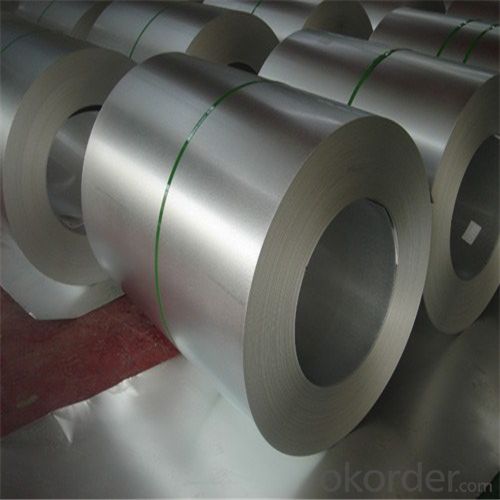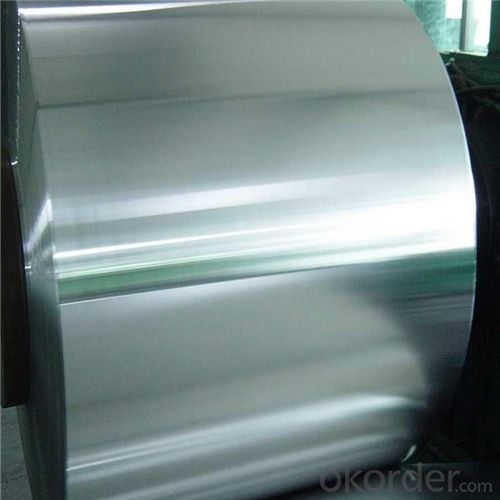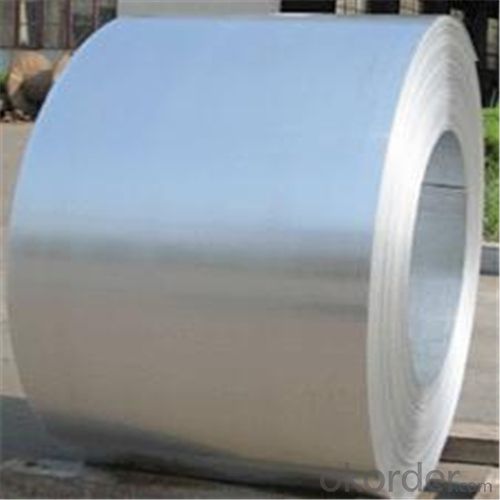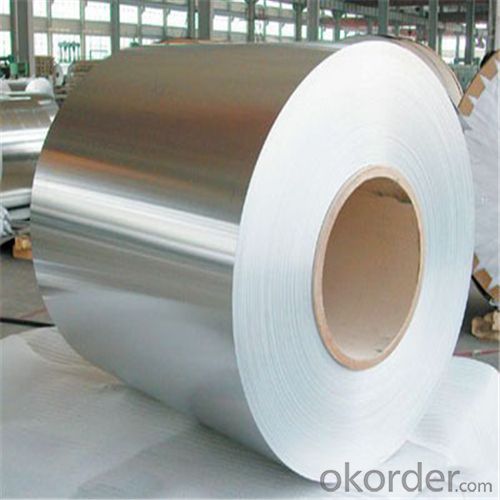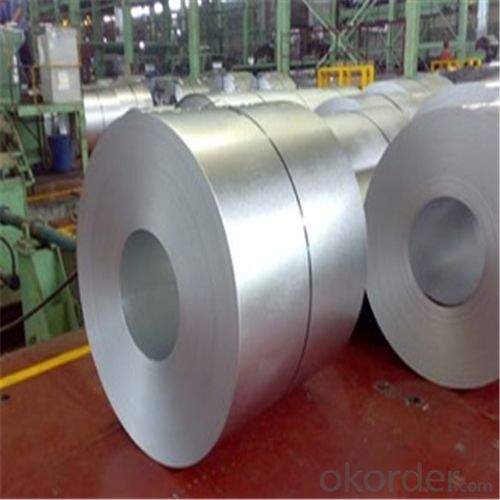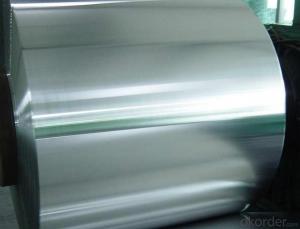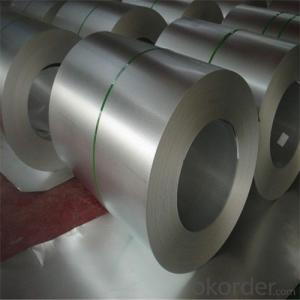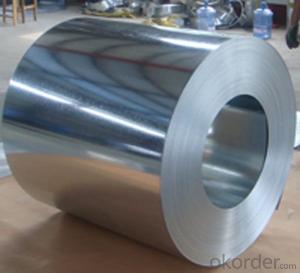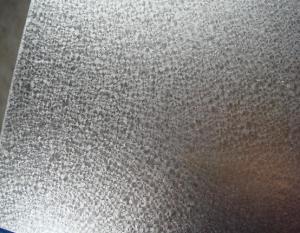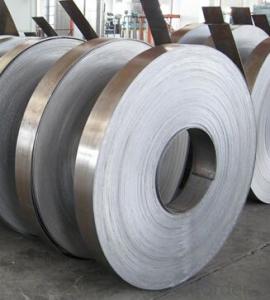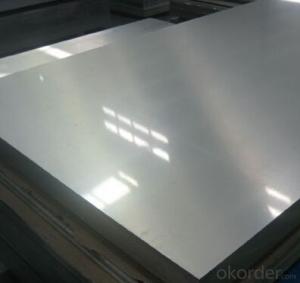Hot-Dip Aluzinc Steel Coil with High Qualitiy
- Loading Port:
- Tianjin
- Payment Terms:
- TT OR LC
- Min Order Qty:
- 50 m.t.
- Supply Capability:
- 5000 m.t./month
OKorder Service Pledge
OKorder Financial Service
You Might Also Like
Hot-Dip Aluzinc Steel Coil Used for Industry
1.Structure of Hot-Dip Aluzinc Steel Coil Description
Hot-dip aluzinc steel sheet is substrated on cold rolled steel in various strength and specification. Coating composition is 55% aluminmum in weight ratio, 43.4% zinc, and 1.5% silicon, with excellent and heat resistance performance.
2.Main Features of the Hot-Dip Aluzinc Steel Coil
•High Purity
•Easy control and operation
•High strength
•Fast melting
•Competitive price
•Best Service
3. Hot-Dip Aluzinc Steel Coil Images
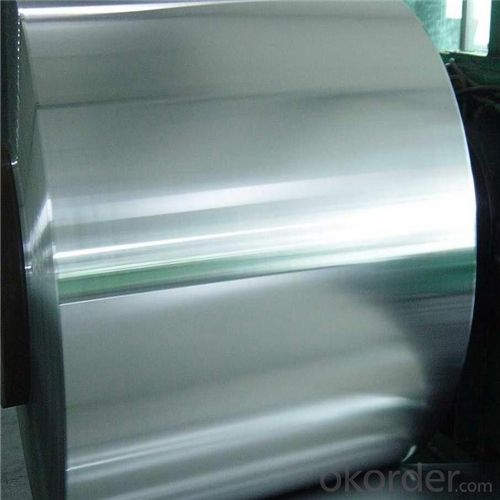
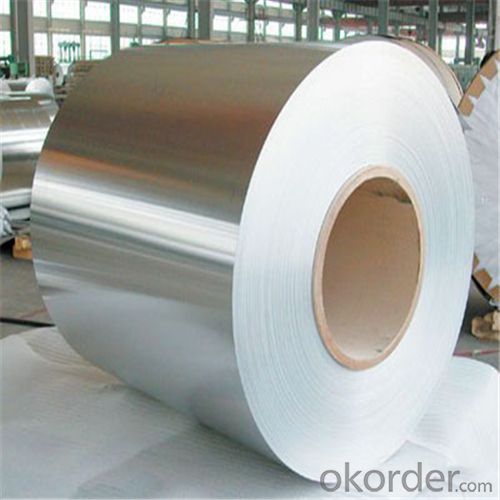
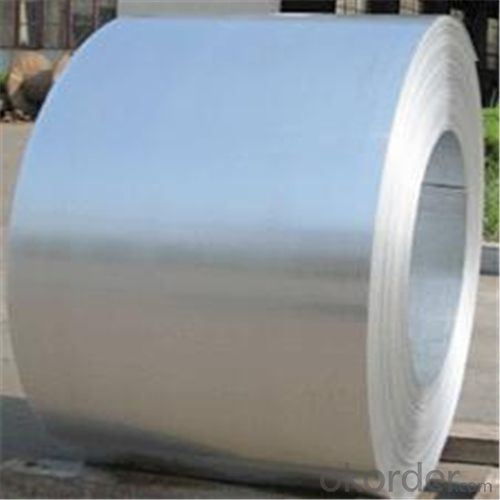
4. Hot-Dip Aluzinc Steel Coil Specification
Hot-Dip Aluzinc Steel Coil | |
Thicknenss | 0.16mm-3.5mm |
Width | 1250mm max |
Coating mass | 30-185g/㎡ |
Spangle | Regular/Minimized/Zero Spangle |
Coil inner diameter | 508-610mm |
Surface treatment | Chromated/non chromated, Oiled/non oiled, Anti finger print |
5.FAQ of Hot-Dip Aluzinc Steel Coil
We have organized several common questions for our clients,may help you sincerely:
①How about your company?
A world class manufacturer & supplier of castings forging in carbon steel and alloy steel,is one of the large-scale professional investment casting production bases in China,consisting of both casting foundry forging and machining factory. Annually more than 8000 tons Precision casting and forging parts are exported to markets in Europe,America and Japan. OEM casting and forging service available according to customer’s requirements.
②How to guarantee the quality of the products?
We have established the international advanced quality management system,every link from raw material to final product we have strict quality test;We resolutely put an end to unqualified products flowing into the market. At the same time, we will provide necessary follow-up service assurance.
③How long can we receive the product after purchase?
In the purchase of product within three working days, We will arrange the factory delivery as soon as possible. The pecific time of receiving is related to the state and position of customers.Commonly 7 to 10 working days can be served.
- Q: How are steel coils used in the production of pipelines?
- Steel coils are an essential component in the production of pipelines. These coils, made from high-quality steel, are used to manufacture the pipes themselves. The process begins by unrolling the steel coil and cutting it into the desired size and length. The cut pieces are then shaped into cylindrical tubes using a process called pipe forming. Once the pipes are formed, they undergo various additional processes to enhance their strength and durability. This may include welding, heat treatment, and coating to protect against corrosion. Steel coils are also used to create the necessary fittings and connectors that are essential for connecting and joining the pipes together. The use of steel coils in pipeline production offers several advantages. Firstly, steel is a strong and durable material, making it ideal for handling the high pressure and stress that pipelines endure. Additionally, steel is resistant to corrosion, which is crucial for pipelines that transport various substances such as oil, gas, or water. Furthermore, steel coils allow for efficient production processes. The uniformity of the coils ensures consistent pipe dimensions, resulting in easy assembly and installation. The versatility of steel also allows for customization, enabling manufacturers to produce pipes of various sizes and specifications to meet specific project requirements. In conclusion, steel coils play a vital role in the production of pipelines. They are used to create the pipes themselves, as well as the necessary fittings and connectors. The use of steel ensures strength, durability, and corrosion resistance, making it the preferred material for pipelines. Moreover, steel coils enable efficient production processes and offer versatility in terms of customization.
- Q: What are the advantages of using steel coils over other materials?
- There are several advantages of using steel coils over other materials. Firstly, steel is highly durable and has a long lifespan, making it ideal for various applications. Secondly, steel coils have excellent strength and can withstand heavy loads and extreme weather conditions. Thirdly, steel is recyclable and environmentally friendly, ensuring sustainability. Additionally, steel coils provide superior corrosion resistance, reducing maintenance costs. Lastly, steel offers versatility in terms of customization, allowing for various shapes, sizes, and thicknesses to meet specific requirements.
- Q: How are steel coils coated for corrosion resistance?
- Steel coils are typically coated for corrosion resistance using various methods such as hot-dip galvanizing, electroplating, or applying a protective layer of paint or powder coating.
- Q: what is the chemical process that makes steel harder when it is heated and cooled rapidly?what does the heating of it do to the atoms?what does the cooling of it do to the atoms?what makes tempered steel so strong compared to untempered steel?
- You can't temper all steels. Generally the material must be a high-carbon or tool steel. Different alloys temper differently, and tempering is usually done to get a specific set of characteristics, so you must know what you are working with and use the right methods and temperature. If you do it wrong, the material may be hard but too brittle for the purpose or have other issues. It can be simple, such as heating to a dull red, carbonizing the surface (use an acetylene rich flame until it blackens the surface) and oil quenching. Do that to a piece of tool steel (like a screwdriver) and it will case (surface) harden it to the point you can't scratch it with a file. Tempering changes the way the molecular structure in the metal is linked and oriented.
- Q: is cold roll or hot roll mill roller is cast steel? or cast iron?
- Casting is a process of forming a part just like forging or rolling are also processes of forming steel. Cast steel can be any grade of steel poured into a sand mold to form a part like a water pump housing in your car. To be classified as steel, the mixture usually contains less than 2% carbon. Cast iron is a mixture that generally contains more than 2% carbon. It also can be poured into a sand mold. There are many grades of iron. Many metals can be cast into shapes like the air intake plenum on your car is probably cast aluminum. Bronze statues are made by pouring molten bronze into a mold. The process used to create a part has an effect of that part's mechanical properties. A casting is weaker than a forging but certain parts cannot be formed by forging. The large diameter rolls used in steel mills to roll steel into thinner plates or sheets is a hot rolled steel that has probably been forged into shape then machined into the final diameter. Some rolls are fabricated from hot rolled steel plates into shape. This allows the ability to add internal cooling paths to keep the roll from overheating.
- Q: Steel coil from vertical to horizontal, what sling needs?
- The sling has little effect, but it is easy to damage the surface of rolled steel.
- Q: What are the dimensions of steel coils used in the aerospace industry?
- The dimensions of steel coils utilized in the aerospace sector exhibit variability, contingent upon the particular application and prerequisites. Nonetheless, in a general sense, steel coils intended for aerospace purposes typically possess standardized dimensions to ensure compatibility and facilitate utilization. Ordinarily, the thickness of aerospace-grade steel coils falls within the range of 0.008 inches (0.2 mm) to 0.125 inches (3.2 mm). The width may span from approximately 0.5 inches (12.7 mm) to 72 inches (1829 mm), although narrower widths are more frequently encountered. Regarding the coil's length, it can extend from several hundred feet to thousands of feet, contingent upon the specific requirements of the aerospace manufacturer. It should be emphasized that these dimensions are not rigid and can be tailored to meet the requirements of the aircraft or aerospace component being produced. The dimensions of steel coils can also vary depending on the specific steel alloy employed and the manufacturing procedures implemented. Ultimately, the dimensions of steel coils within the aerospace field are determined by factors such as strength, weight, durability, and the specific requirements of the aerospace manufacturer or project.
- Q: How are steel coils inspected for width variations?
- Steel coils are inspected for width variations using specialized equipment such as laser or optical sensors that measure the width of the coils at regular intervals. These sensors provide accurate and precise measurements, allowing inspectors to identify any variations in width across the length of the coil.
- Q: Question about steel type used in bridges.?
- Do you mean galvanized steel?
- Q: My teacher says if they were that they would still be standing today. I'm not sure if he means the reinforced steel in the concrete beams, columns etc or if the whole beams and columns floor etc were were made of reinforced steel.
- Reinforced Steel is found in concrete, and if the towers were built with reinforced concrete (concrete beams with rebar) then they would likely still be standing. The twin towers were made of steel. When steel is heated up, it deforms and collapses, which is why it didnt stand up. One of the top 2 things against steel is that it is not fire resistant.
Send your message to us
Hot-Dip Aluzinc Steel Coil with High Qualitiy
- Loading Port:
- Tianjin
- Payment Terms:
- TT OR LC
- Min Order Qty:
- 50 m.t.
- Supply Capability:
- 5000 m.t./month
OKorder Service Pledge
OKorder Financial Service
Similar products
Hot products
Hot Searches
Related keywords
